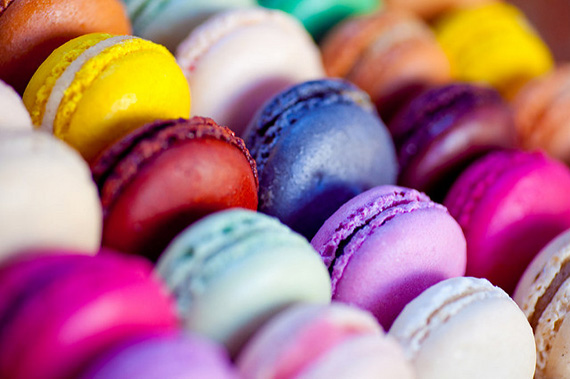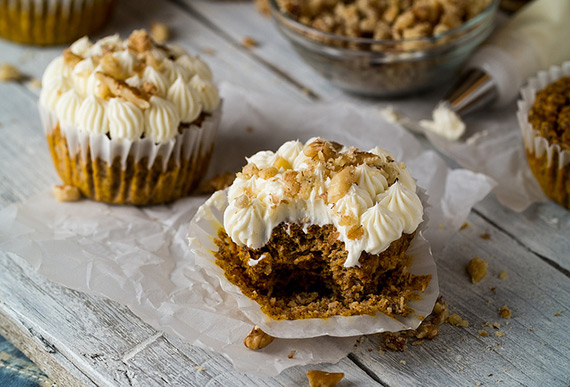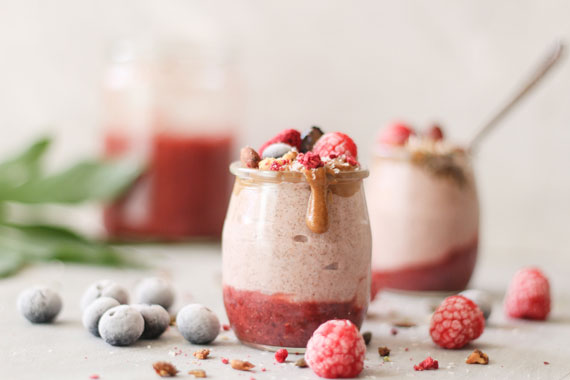Have you ever been flipping through a magazine or browsing the internet and seen an image of an entrée that instantly made your mouth water? A good photograph of food can make your delicious dish look even more delectable than it already is. If you want to take high quality food photographs for your business—or just your blog—here are some tips to help you get better food photos.

photo by julien haler
Style is Everything
This may seem like a bit much, but “styling” or arranging your food carefully can make a dramatic difference in your food photographs. On professional food photography shoots, a food stylist will often be employed just to get the food looking its best. Many parts of the food may not even be real! Thankfully, you don’t need to go this far. Just make sure your food looks nice with the important features showing. For example, for a burger photo, make sure the lettuce isn’t covering up the burger. Or, use a plain plate so as not to distract from the food. A garnish related to the subject will also enhance the photo. For example, for a cheese sandwich, crumble some cheese on the side of the plate.

photo by Agustín Nieto
Light Is Key
When lighting food, we want to avoid harsh shadows and highlights. To do this use a soft, diffused light source. A shaded area with reflected natural light can work well. For artificial light, try lights reflected from large umbrellas, or large softboxes. Don’t light your subject directly from the front, as the light will fill in all the shadows, giving a flat image with no texture. Instead, light from the side to bring out the texture and details in the food.

photo by rpavich
Play With Angles
Food can be shot both straight down from the top, straight across from the side, and from virtually any other angle. The angle you choose should depend on the food you are photographing. When most of the detail is on the top of the food, such as a bowl of soup, it’s normally best photographed from above. Food with the detail on the side, such as a burger or sandwich, meanwhile, is better photographed from the side.

photo by Matteo Paciotti
For food with detail in both the top and side, you can use a 45 degree angle. Of course, there’s no reason not take a few shots of the food from a variety of different angles. Also trying getting some close-up detail shots.
Find Your Preferred Depth of Field
All things in photography are subjective, but depth of field (the amount of the photo in focus) is probably one of the more subjective food photography ‘rules’. Some photographers prefer to use a very shallow depth of field, with just the leading edge of the food in focus.

Photo captured by Claudia Soares
However, other photographers prefer all of the food in focus. If you want all of the food in focus but the background out of focus, you may need to use a tilt-shift lens, particularly if you are shooting the food at an angle. A tilt shift lens allows you to change the plane of focus so that rather than being parallel with the camera’s sensor, it is at an angle. Tilt shift lenses are quite expensive, so if you are on a budget you can try and recreate the effect in Photoshop. It won’t look as good a real tilt-shift photo, but you can use Photoshop plugins such as Topaz Lens Effects or OnOne FocalPoint to blur certain areas of the photo (the background) while keeping the rest in focus. You may also want to look into the LensBaby line of lenses.
About the Author
Dave Kennard writes for discoverdigitalphotography.com, offering photography tips and advice. The website covers all types of photography, including landscape, portrait, and macro, and is updated with new photography tips on a regular basis.
Like This Article?
Don't Miss The Next One!
Join over 100,000 photographers of all experience levels who receive our free photography tips and articles to stay current:






Leave a Reply